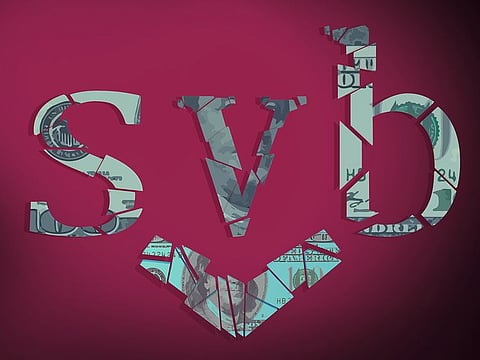What the Silicon Valley Bank bailout teaches us
There is greater need for stronger financial regulation post-2008 crisis than ever before

The Biden administration’s rescue of the Silicon Valley Bank has some key lessons. First, it is time to give up on the convenient fiction that the checks and balances of the US market can contribute to the policing of irresponsible bankers. Second, it follows that the fearsome regulatory clampdown on banks after the 2008 crisis was actually not fearsome enough.
Until now, financial regulation has operated on the theory that some failure is desirable. Unlike airline safety regulation, where the objective is zero crashes, an occasional financial crash was supposed to incentivise prudent conduct.
But Silicon Valley Bank, the institution at the centre of the crisis, was a prime example of a lender that could have been allowed to fail messily, inflicting losses on depositors. Instead, the tech start-ups and venture capitalists who unwisely entrusted cash to lousy bankers have escaped without a scratch.
Consider how extremely risk-averse the government’s decision was. Silicon Valley Bank was a medium-sized lender with almost no linkages to the wider financial system.
Its collapse occurred at a time of full employment, when worries about the broader impact on the economy were particularly far-fetched. It’s one thing for the government to bail out financiers in 2008, when capitalism itself seemed to be imploding. It’s another to do so when joblessness stands at under 4 per cent.
Threat to US dynamism
If Silicon Valley Bank posed no danger to the wider economy, the threat to US dynamism has been overstated, too. The bank’s clients — entrepreneurs and their investors — do indeed contribute disproportionately to innovation. But they are also proudly independent risk-takers, people who have freely chosen to work in a sector in which company collapses are routine.
The magic of the Valley is precisely that failure is celebrated as a learning experience. Well, if a bunch of start-ups failed because they selected flaky bankers, the tech world might have internalised a salutary lesson.
Until last week, moreover, venture capitalists were complaining that there was too much capital washing around their industry. During the pandemic bubble, venture funds had raised billions of dollars, and a lot of that capital was still sitting on the sidelines, waiting for start-up valuations to come down to a reasonable level.
Silicon Valley Bank could have been the shock that forced a reset. Thanks to the government’s action, the market won’t have to adjust.
The point here is not that the rescue was misguided. There’s a strong argument that entrepreneurs should be able to form companies, raise capital and park the funds in a bank without having to worry about whether the cash will be safe. Start-ups ought to focus on inventing products, not diligencing banks.
Rather, the point is that if Silicon Valley Bank’s rugged, entrepreneurial depositors get bailed out, then all future depositors will get bailed out when the next bank failure inevitably rolls around. The clients of other failing mid-size lenders will surely be less capable of coping without government help.
So it’s time to abandon the notion that banks have to manage themselves prudently to attract deposits. Zero depositor losses equate to zero discipline on bankers. Henceforth, the only guarantee of sound behaviour will be sound regulation.
Alarm bells all over
This is alarming, because the collapse of Silicon Valley Bank illustrates how flawed even the better regulators are. In 2008, some of the mayhem could be blamed on forum shopping by troublemakers: If they housed their risky business in an insurance company or an obscure mortgage shop, they would be regulated by weaker agencies. But Silicon Valley Bank was supervised by the Federal Reserve, supposedly the most expert and independent of all overseers.
Moreover, with the unfair benefit of hindsight, Silicon Valley Bank was festooned with red flags. As the lender at the heart of the 2021 tech bubble, it was bound to experience a boom-bust cycle. Sure enough, its public disclosures recorded a doubling in its deposit base as the party crescendoed — a clear warning sign.
Add in the past year’s spike in interest rates, and it should have been obvious that the bank’s bond portfolio had lost value. The grim conclusion is that Fed supervisors just don’t ask tough questions until it is too late.
But there is a solution. After the 2008 crisis, the Fed began to conduct regular stress tests on the largest lenders. These tests are a way of routinising the act of asking questions: Would the bank remain sound if the economy experienced a recession, the dollar fell sharply or oil prices spiked? The lesson from last weekend is that even medium-sized banks need this sort of attention.
During the Trump years, policy shifted in the opposite direction. Congress rolled back some of the post-2008 safeguards, and the Fed decided there was no need to burden mid-size lenders unduly.
But if depositors won’t discipline the bankers, regulators must do so. Otherwise, bailouts will become dizzyingly common — and far more expensive to the economy than proper regulation.
Washington Post
Sebastian Mallaby is a senior fellow for international economics at the Council on Foreign Relations
Sign up for the Daily Briefing
Get the latest news and updates straight to your inbox



